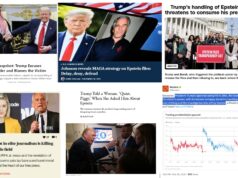Cross posted from Scaling Green, and recommended reading for all Virginia legislators, members of the State Corporation Commission, Dominion Power executives, etc. Enjoy! 🙂
We wrote recently about new polling, produced for Clean Edge and SolarCity, that found enormous support among Americans for clean energy. For instance, by a nearly unanimous 87%-7% margin, Americans said that renewable energy is important to America’s future. Also, by a 74%-12% margin, U.S. homeowners “back the continuation of federal tax incentives that support the growth of solar and wind.” Americans strongly oppose, by a 61%-24% margin, efforts by electric utilities aimed at “being able to charge an additional fee for solar powered homes and businesses.” Finally, asked which energy sources they view as “most important to America’s energy future,” solar power came out on top (50% of homeowners agreed), with wind power second (42%), and energy efficiency (25) also in the top four. In contrast, fossil fuels like coal (8%) and oil (17%) scored near the bottom.
Today, Clean Edge and SolarCity held a webinar on these poll results, with some fascinating insights provided by Lyndon Rive of SolarCity, Ron Pernick of Clean Edge, and pollster John Zogby. A few that jumped out at us include the following.
- Lyndon Rive of SolarCity notes that while in 2009, only 2% of new power capacity installed in the U.S. was solar, during the first three quarters of 2014, that share reached a whopping 35%. In Rive’s view, solar’s share of new installed capacity in the U.S. could hit 50% over the next five years.
- John Zogby said that solar and wind have moved beyond being “esoteric” to being real and visible. Zogby noted that when a homeowner sees solar being installed on a neighbor’s home, it becomes more real and more accessible.
- Zogby also argued that non-renewable energy sources have undergone the “exact opposite of a renaissance” in recent years, in part due to their perceived economic and geopolitical volatility.
- Rive argued that, despite a perception of a partisan divide on solar power, that actually solar has “total bipartisan support.” In fact, Rive noted, if you go back to the beginning of the solar tax credit, it was led by Republican Senators, and was extended for eight years by a Republican president. It’s unfortunate, in Rive’s view, that the “Solyndra blowup” turned solar into a “Democratic political football,” as “in reality it’s supported by both parties.”
- Rive made an interesting point about how the drought in the West could drive more clean energy, as solar power uses no water at all. In stark contrast, Rive explained, the amount of water used by fossil fuel-generated power plants is enormous, while if a homeowner were to install solar power, “the net effect of that is better than using no water at all.”
- With regard to political opposition at the federal and state levels to clean energy scaling, Rive argued that when you have a technology source go from 2% to 35% of new power capacity in just a few years, it’s very threatening to incumbent energy sources. In response, those incumbents are “leveraging all their political muscle” to persuade politicians to slow down the growth of clean energy.
- Even with that incumbent, fossil-fuel-industry opposition, Rive said that the attitude in Congress towards extension of the ITC has gone from “no way in hell” to “how do we make this work…get it extended” in just the last year or so. Rive also noted that in the U.S., the fossil fuel industry has over 13 permanent tax credits, and in general is highly subsidized.
- Rive recommended fighting back by educating customers to fight for their right to energy competition. Beyond that, though Rive argued that the solar industry needs to work with utilities to resolve the “natural friction” between the two industries, to make it possible for utilities to make money off the solar sector, in part by changing the utility business model to one where it becomes the manager of the “flow of energy” from “everywhere.”
- Finally, Rive commented that microgrids are growing, particularly in islands and small communities, to the point where fossil fuels are becoming the “alternative source” of energy, not solar. Rive said he sees that paradigm playing out in the future.













